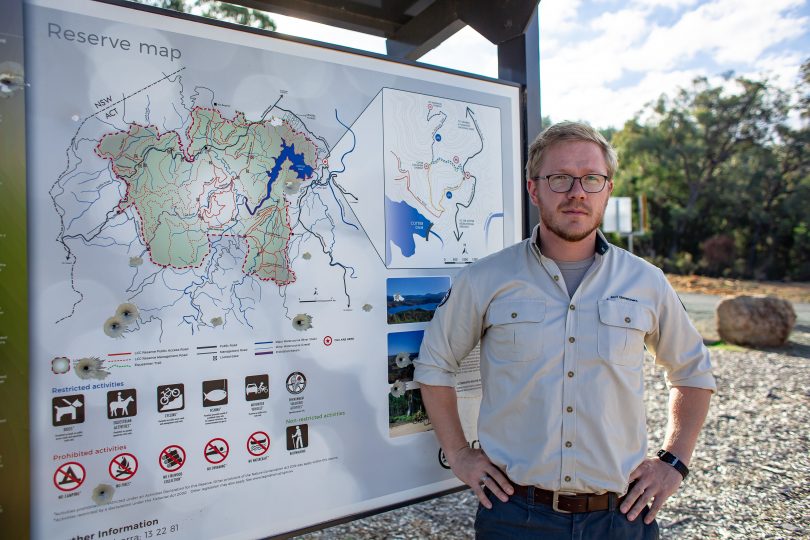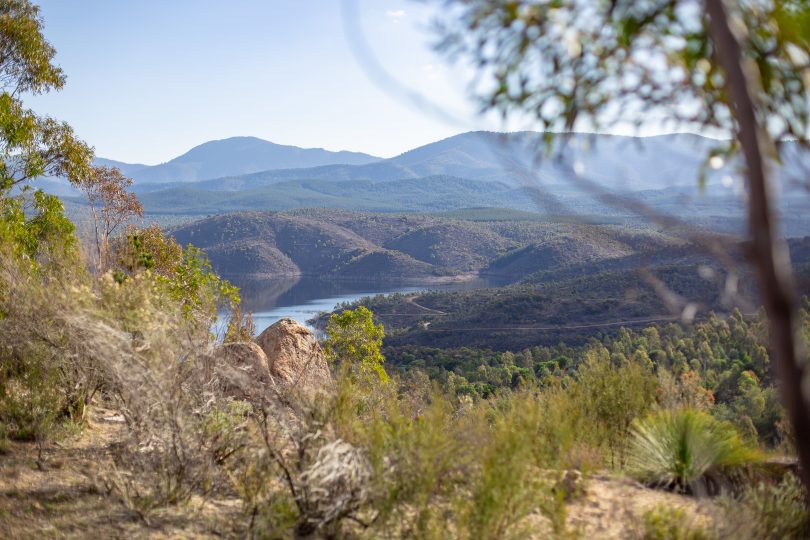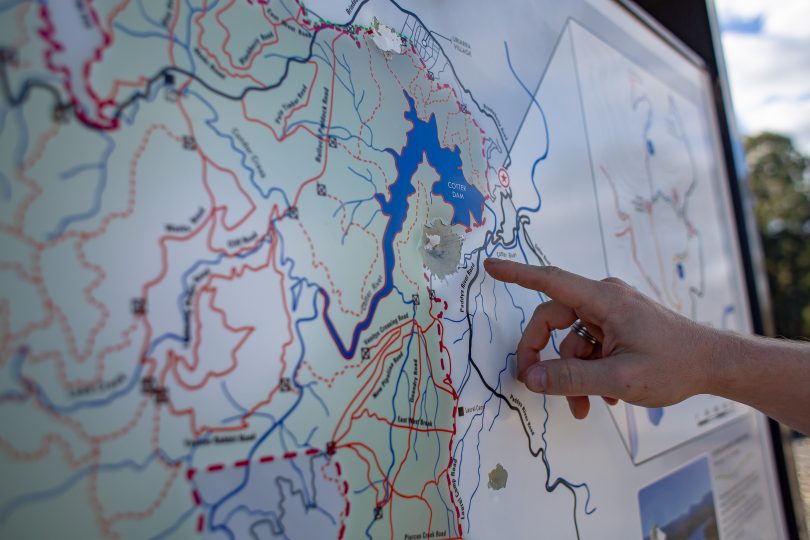
Lower Cotter Catchment area manager Nick Daines said there is no “silver bullet” to fix the spate of crime in the area. Photos: George Tsotsos.
ACT Parks and Conservation will cordon off two roads in the Lower Cotter Catchment in the coming weeks to crack down on the number of cars being dumped and set alight in the area.
Lower Cotter Catchment area manager Nick Daines said an array of anti-social behaviour including cars being driven into trees, driven off cliffs, being set alight along with illegal shooting, camping and fishing were the motivators behind closing the two rural roads.
Mr Daines said that over 100 cars had been dumped and set alight in the reserve in the past decade. He hopes that by moving the gates, previously installed down the track, further up towards the roads will deter offenders.
“Car fires are still one of the biggest concerns for us just because of the fire risk and the impact that can have on the catchment,” he said. “Luckily in winter that is less of an issue because even though they are still going out there and still seeing car fires, it doesn’t pose the same bushfire risk.
“Not every car fire ends up like Pierces Creek because that just happened on a really bad weather day. In the last 10 years, we have had over 100 dumped cars set alight in the area so we are working with police and RFS to give us better powers to remove dumped vehicles.
“We want to speed up that process because once it is dumped, we don’t want to encourage hoons to come out the next night and set fire to it.”

Over 100 dumped cars have been set alight in the Lower Cotter Catchment in the past decade.
Mr Daines said the Lower Cotter Catchment is a “recovering landscape” and shared concerns that more car fires in the reserve that is home to the Cotter reservoir could damage Canberra’s second-largest supply of clean drinking water.
He pointed to November’s Pierces Creek bushfire, a blaze started by a stolen car that was set alight, to highlight how damaging car fires can be.
“Every time there is a fire, it takes so much longer for the reserve to recover,” he said. “During a fire, the sediment beneath the forest washes down into the dam which means we can’t drink the water which is 25 per cent of Canberra’s water supply.
“Pierces Creek proved that we needed to act on this stuff. If the wind had been blowing the other way on that day, it would have come straight through the water catchment and the water out of that catchment would have been undrinkable for the next decade.
“This is why we are taking it so seriously.”

Mr Daines points out a sign that has been riddled with bullet holes.
Mr Daines said there was no “silver bullet” that could put an end to the spate of crime, but hopes the closing of the roads will allow “passive surveillance” by the community, alongside the ACT Policing’s dedicated rural patrol unit and the ACT Government’s recently installed CCTV cameras at choke points.
“We are moving the two gates further up the track to protect the really sensitive areas. If these areas were set alight in the next few years, it would be decades before we could realistically fix them up,” he said.
“By moving the gates back up the hill towards the main road, it means that there is a little bit of passive surveillance. There are around 100 kilometres of track out there in the catchment and we are only closing a couple.
“The cameras themselves might not do it, the police’s night patrol might not do it and moving the gates alone might not do it. But suddenly when you put all those things together, we have put together a pretty good compliance framework that will stop these crimes.”












